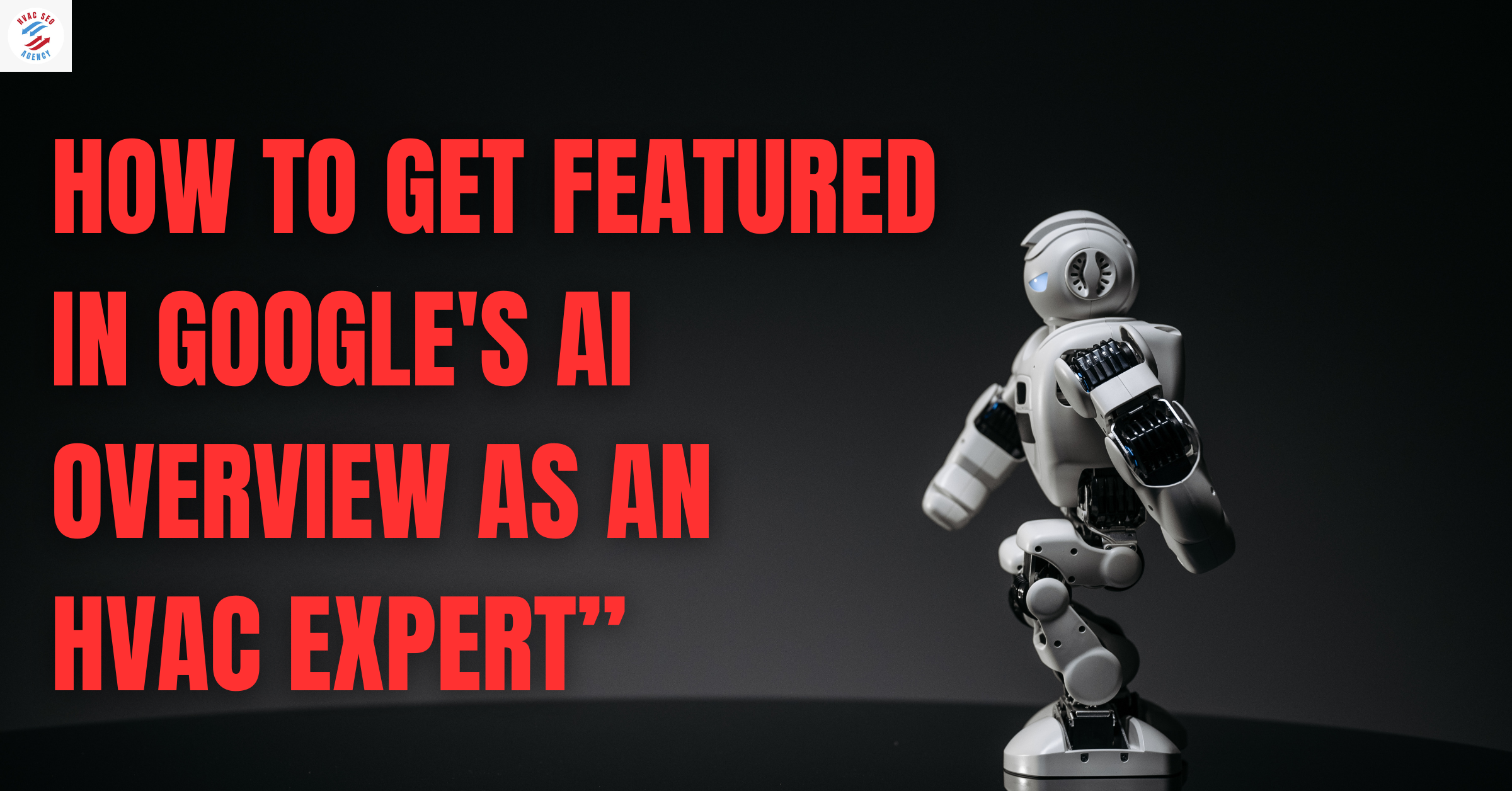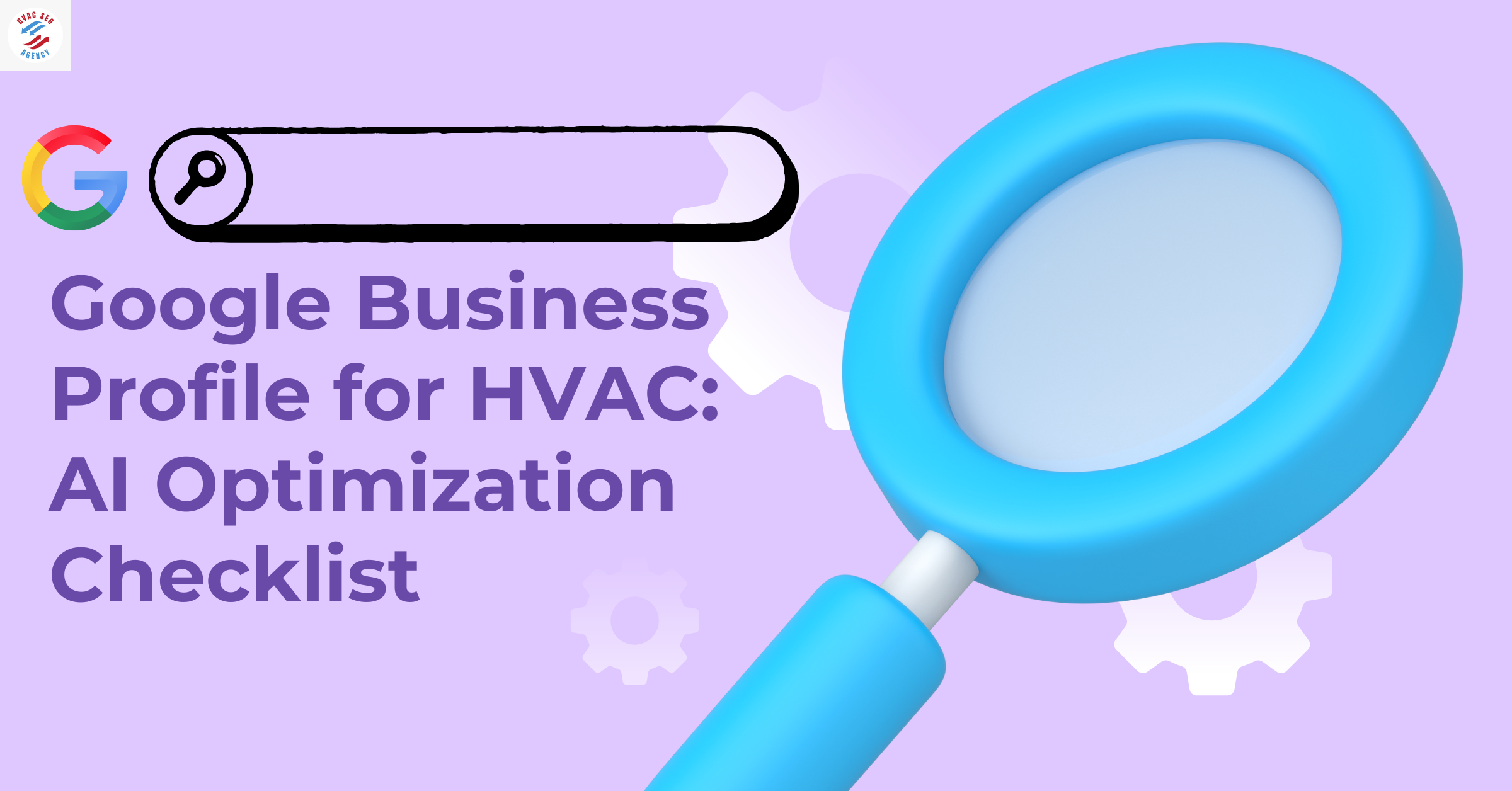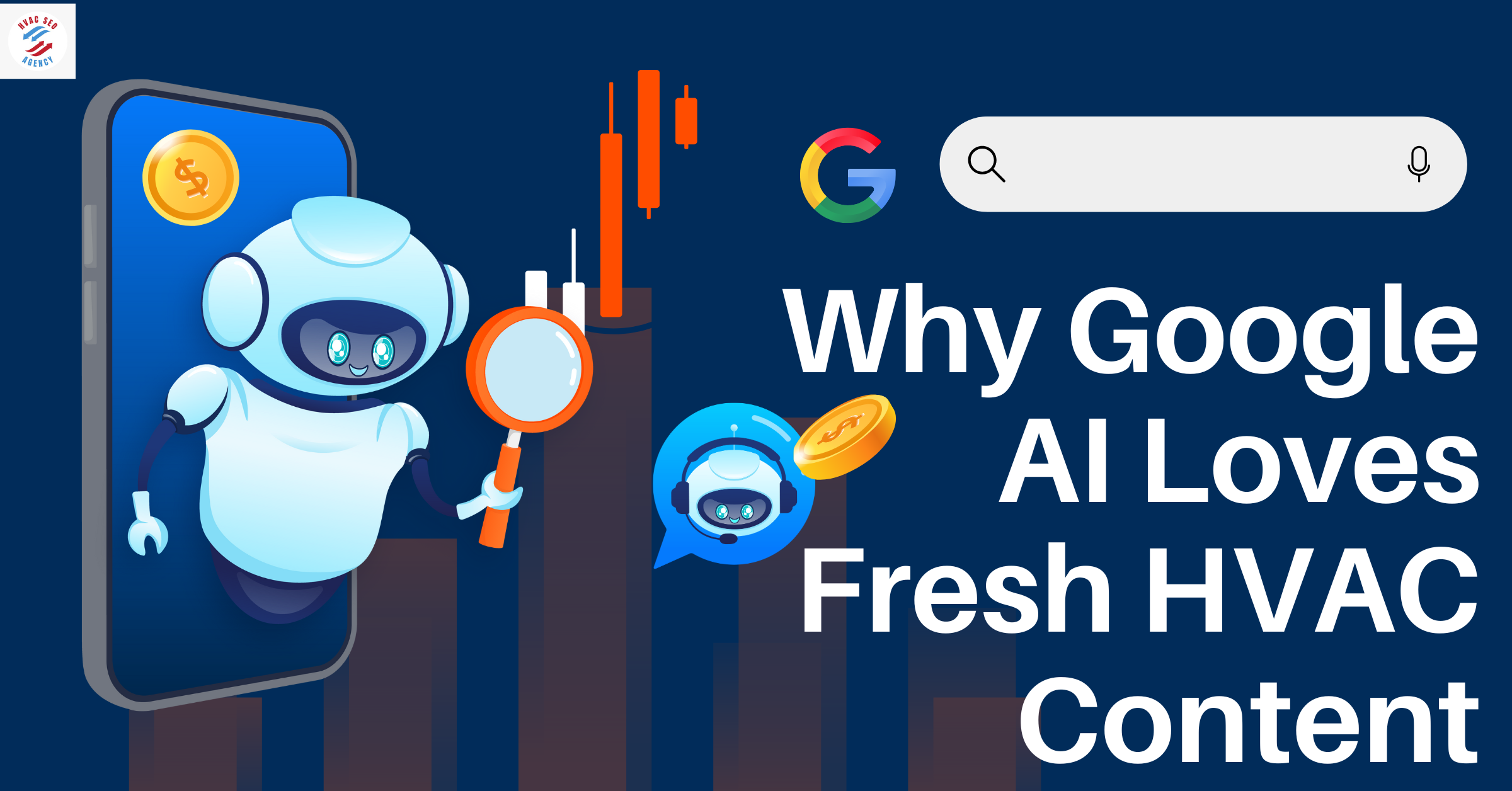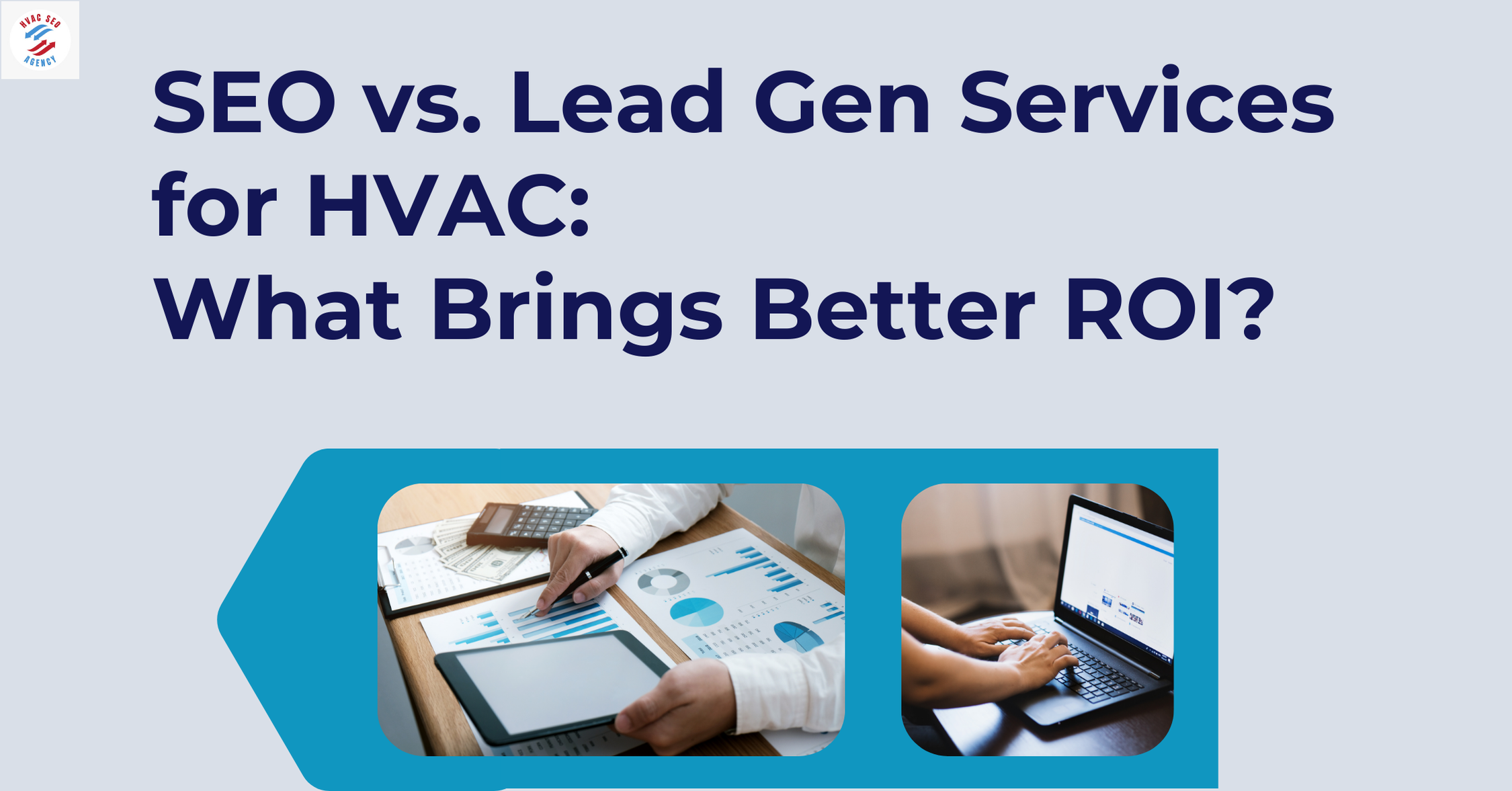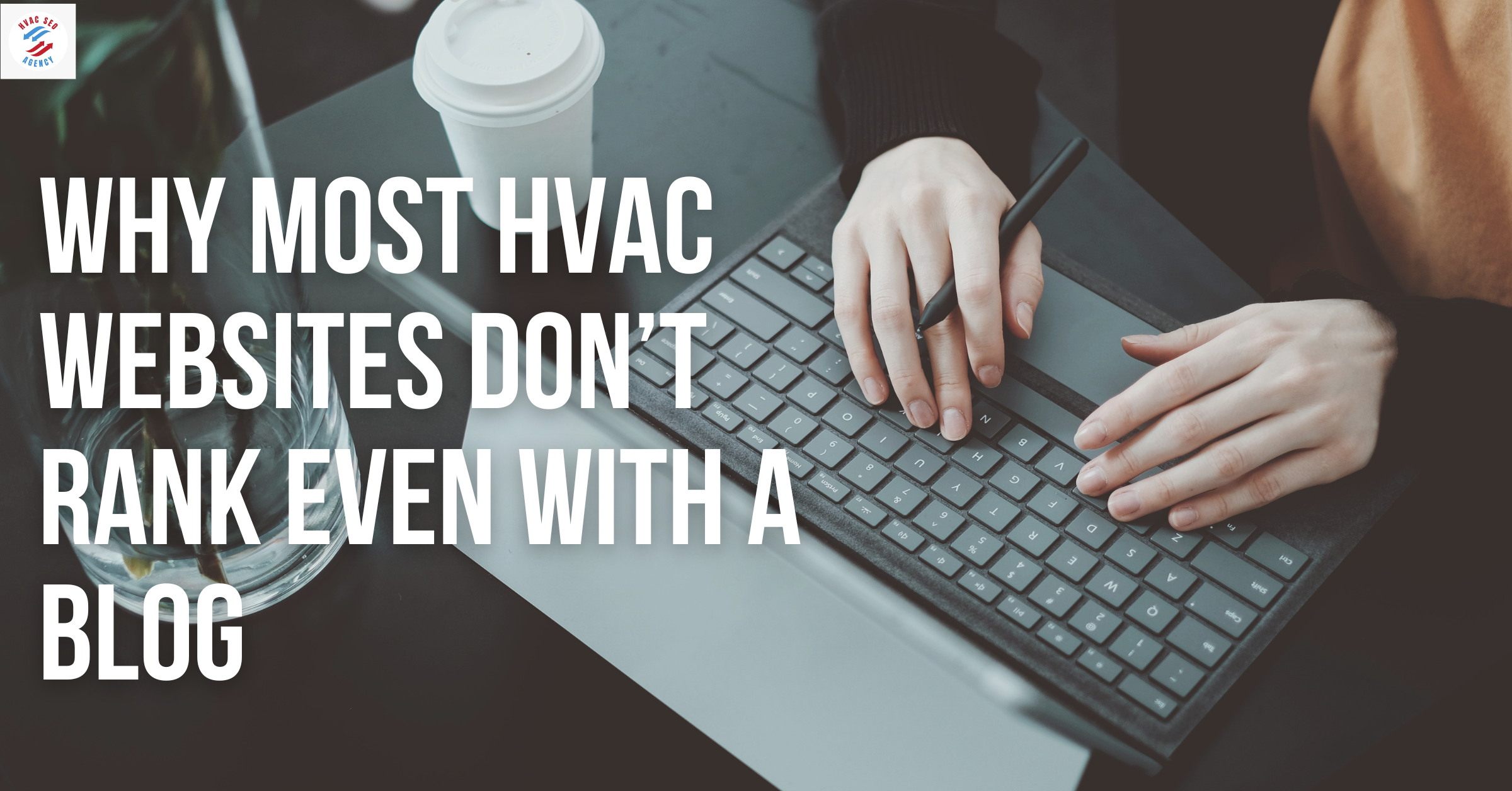The Future of HVAC Refrigeration Technology

1. Emerging Trends in HVAC Refrigeration (2025 & Beyond)
The HVAC industry is undergoing a massive transformation, driven by regulatory shifts, technological advancements, and the growing demand for HVAC eco-friendly cooling. With the phase-out of high-global-warming-potential (GWP) refrigerants and the increasing push toward energy efficiency, businesses must adapt to new innovations in cooling systems to remain competitive. The adoption of next-gen HVAC refrigerants is becoming mandatory as environmental regulations tighten, pushing HVAC companies toward low-GWP alternatives like R-32, R-454B, and CO₂-based cooling solutions. Additionally, the rise of smart automation, IoT integration, and AI-driven HVAC systems is optimizing performance, lowering energy consumption, and reducing long-term costs.
To ensure sustainable growth, HVAC businesses must also focus on strong digital marketing strategies, as competition in the industry intensifies. Partnering with an HVAC SEO Agency can help businesses increase online visibility, generate high-quality leads, and position themselves as leaders in the HVAC market. As more companies transition to renewable energy-powered HVAC systems, leveraging SEO-driven marketing is essential to educate customers and drive conversions. By embracing HVAC refrigeration trends, companies can ensure long-term profitability while complying with industry regulations and meeting evolving consumer demands.
Key Drivers of Change in HVAC Refrigeration
Several critical factors are shaping the future of HVAC refrigeration trends:
Stricter Environmental Regulations – The U.S. Environmental Protection Agency (EPA) is enforcing new refrigerant standards, banning high-GWP hydrofluorocarbons (HFCs).
Rising Energy Costs – Businesses are investing in innovations in cooling systems to reduce operational expenses and improve sustainability.
Consumer Demand for Smart Cooling – IoT-connected HVAC eco-friendly cooling solutions are gaining popularity for their energy savings and remote access capabilities.
Growth of AI & Automation – Predictive analytics and AI-driven cooling systems optimize performance and reduce energy waste by up to 30%.
Market Impact of Key HVAC Refrigeration Trends
To understand how these changes are reshaping the HVAC industry, it’s essential to analyze the long-term market impact of emerging trends. The transition to next-gen HVAC refrigerants and smart cooling solutions is creating new opportunities for energy efficiency, cost reduction, and regulatory compliance. As government policies mandate stricter environmental standards, businesses that fail to adapt may face increased operational costs and legal challenges.
Additionally, smart HVAC technology, including AI-driven cooling systems and IoT-enabled automation, is rapidly transforming the industry. The demand for real-time monitoring, predictive maintenance, and automated climate control is expected to surge, with over 80% of commercial HVAC systems incorporating smart technology by 2030.
With sustainability becoming a top priority, the adoption of renewable energy-powered HVAC solutions is expected to grow exponentially. Solar-powered HVAC units, electric heat pumps, and battery-integrated cooling systems will help businesses reduce their carbon footprint and qualify for energy tax incentives.
Partnering with an HVAC SEO Agency can also help businesses leverage digital marketing strategies to increase their market reach, attract eco-conscious customers, and establish themselves as industry leaders. As consumer awareness of energy-efficient cooling solutions grows, companies that effectively promote their HVAC refrigeration trends will gain a significant competitive advantage.
Table: Key Emerging Trends & Their Projected Market Impact
Invest in AI-driven HVAC refrigeration trends to improve operational efficiency.
Transition to next-gen HVAC refrigerants like R-32, R-454B, and CO₂.
Implement IoT-integrated cooling systems to track performance and reduce energy consumption.
Adopt renewable energy HVAC solutions to lower carbon footprints.
Graph: Market Growth of Smart HVAC Technologies (2020-2030)
A line graph showcasing the rising adoption of AI, IoT, and smart cooling systems in the HVAC industry over the decade.
Why Are Traditional Refrigerants Being Phased Out?
The demand for next-gen HVAC refrigerants is rising as traditional HFC refrigerants are being banned due to their high GWP and harmful environmental impact. The EPA's AIM Act (American Innovation and Manufacturing Act) mandates the phasedown of HFC production by 85% by 2036, prompting the HVAC industry to adopt low-GWP alternatives that are more sustainable and energy-efficient. This shift is crucial to achieving HVAC eco-friendly cooling and meeting international agreements such as the Kigali Amendment, which aims to reduce the use of high-GWP refrigerants globally.
Businesses that continue using outdated refrigerants will face higher operational costs, non-compliance penalties, and decreased efficiency as HFC-based systems become obsolete. However, switching to low-GWP refrigerants often requires upfront investments in equipment upgrades, technician training, and system modifications. Many HVAC contractors and business owners are turning to HVAC financing options to help manage the costs associated with retrofitting or replacing existing refrigeration systems.
With financial incentives, government rebates, and flexible HVAC financing solutions, businesses can transition to next-gen HVAC refrigerants without significant financial strain. Investing in modern, energy-efficient HVAC refrigeration trends not only ensures regulatory compliance but also reduces long-term operational expenses, making it a strategic move for businesses looking to stay competitive in the evolving HVAC industry.
Comparison: Traditional vs. Next-Gen Refrigerants
To illustrate the benefits of new refrigerants, let’s compare traditional high-GWP refrigerants with their modern replacements.
Table: Traditional vs. Next-Gen HVAC Refrigerants
R-32 – Energy-efficient and widely adopted in residential & commercial HVAC.
R-454B – Expected to replace R-410A in many commercial applications.
CO₂ (R-744) – Gaining traction in supermarket and industrial refrigeration due to its ultra-low GWP.
How Will This Impact HVAC Businesses?
Regulatory Compliance – HVAC contractors must switch to EPA-approved refrigerants to avoid penalties.
Equipment Upgrades – Older systems designed for HFCs may require retrofitting to support next-gen refrigerants.
Cost Implications – While next-gen HVAC refrigerants may have higher upfront costs, they offer long-term savings through energy efficiency.
Pie Chart: Global Adoption of Low-GWP Refrigerants by 2030
A pie chart showing the projected market share of CO₂, R-32, R-454B, and other refrigerants as they replace traditional HFCs.
How HVAC Companies Can Prepare for the Transition
Train Technicians – Educate HVAC professionals on handling new refrigerants.
Upgrade Equipment – Ensure refrigeration systems are compatible with low-GWP alternatives.
Stay Informed – Keep track of EPA policies and state regulations.
Final Takeaway: The Future is Eco-Friendly
With the push for HVAC eco-friendly cooling, businesses must embrace innovations in cooling systems and switch to next-gen HVAC refrigerants to remain competitive. Companies that fail to adapt may face operational disruptions and compliance issues in the near future.
3. AI, IoT & Smart HVAC Refrigeration Technology
The Role of AI & IoT in HVAC Refrigeration
The integration of Artificial Intelligence (AI) and Internet of Things (IoT) in HVAC systems is revolutionizing HVAC refrigeration trends by making systems more efficient, predictive, and cost-effective. Businesses and homeowners are increasingly adopting smart cooling technologies to optimize performance and reduce energy consumption.
How AI Enhances HVAC Refrigeration
AI is transforming innovations in cooling systems through:
Predictive Maintenance: AI algorithms detect potential equipment failures before they occur, preventing costly breakdowns.
Energy Optimization: AI-powered thermostats analyze real-time data to adjust cooling settings, reducing energy waste by up to 30%.
Self-Learning Systems: Smart HVAC units adapt to occupancy patterns, providing cooling only when needed.
Automated Climate Control: AI balances humidity, air quality, and temperature, enhancing comfort while reducing operational costs.
How IoT-Enabled Refrigeration Improves Performance
IoT integration allows HVAC systems to communicate in real-time with cloud-based platforms, enabling:
Remote Monitoring: Facility managers can track system performance and energy consumption from anywhere.
Smart Sensors: These devices continuously monitor temperature and pressure, ensuring optimal cooling efficiency.
Automated Alerts: If a refrigeration system malfunctions, IoT sends instant notifications for quick repairs.
Key Benefits of AI & IoT in HVAC Refrigeration
AI-driven cooling systems enhance efficiency and lower costs.
IoT reduces maintenance expenses and minimizes equipment failures.
Smart technology increases the lifespan of HVAC refrigeration units.
Businesses adopting HVAC eco-friendly cooling will gain a competitive edge.
Graph: AI-Driven HVAC Market Growth Projection (2020-2030)
A bar graph showcasing the projected adoption of AI-powered HVAC systems in commercial and residential sectors.
Upgrade to AI-powered thermostats that optimize temperature settings.
Integrate IoT sensors to automate performance tracking and energy management.
Adopt predictive maintenance solutions to cut repair costs.
Invest in HVAC SEO services to market new smart cooling solutions effectively.
4. The Impact of Electrification & Renewable Energy in HVAC Refrigeration
Why is HVAC Shifting Toward Electrification?
The HVAC industry is moving away from fossil-fuel-based refrigeration systems toward fully electric and renewable-energy-powered solutions. Electrification in HVAC refrigeration trends is accelerating due to:
Government incentives promoting solar and electric-powered HVAC systems.
Rising energy costs, making renewable HVAC technologies more attractive.
Lower emissions, as electric-powered HVAC units reduce carbon footprints.
The Rise of Solar-Powered & Renewable HVAC Systems
Solar-powered HVAC eco-friendly cooling solutions are becoming more mainstream due to:
Improved energy efficiency – Solar-powered systems reduce electricity usage by 50% or more.
Lower operational costs – Businesses can cut cooling expenses with renewable energy-powered HVAC systems.
Long-term savings – While initial setup costs can be high, companies recover investments in 5-7 years through energy savings.
Table: How Renewable Energy HVAC Systems Reduce Costs
Heat pumps offer both cooling and heating, making them more energy-efficient than traditional HVAC systems.
New-generation heat pumps can operate at efficiencies 3-4 times higher than fossil-fuel-based cooling systems.
By 2030, over 60% of HVAC businesses will transition to heat pump technology.
Graph: Solar-Powered HVAC Adoption in the USA (2020-2030)
A graph displaying the increasing percentage of businesses and homeowners adopting solar HVAC technology.
While HVAC refrigeration trends favor renewable and electric solutions, there are challenges:
High Initial Costs – The upfront investment for solar-powered and electric HVAC systems can be expensive.
Limited Technician Training – Many HVAC professionals lack expertise in handling next-gen electric systems.
Grid Dependency – Renewable HVAC units require battery storage solutions to maximize efficiency.
How HVAC Companies Can Prepare for Electrification
Invest in training programs to educate technicians on next-gen HVAC refrigerants and electric systems.
Offer solar-powered HVAC solutions to commercial and residential clients.
Collaborate with renewable energy companies to provide hybrid solutions.
Market green HVAC solutions effectively with an HVAC SEO agency to attract eco-conscious customers.
The Future of Electrification in HVAC Refrigeration
By 2035, over 70% of HVAC refrigeration systems will be fully electric or solar-powered.
Government incentives will drive mass adoption of solar and battery-powered HVAC cooling systems.
Businesses that fail to adapt may face higher energy costs and regulatory penalties.
5. Innovations in HVAC System Design and Materials
Advancements in HVAC System Design
As HVAC technology evolves, HVAC refrigeration trends are shifting toward compact, high-efficiency system designs that optimize cooling performance while minimizing energy consumption. These innovations are addressing key industry challenges, such as high operational costs, sustainability goals, and the demand for energy-efficient solutions.
Some of the most notable innovations in cooling systems include:
Microchannel Heat Exchangers (MCHEs) – These improve heat transfer efficiency by up to 30%, making HVAC systems lighter and more compact.
Variable Refrigerant Flow (VRF) Systems – VRF technology adjusts refrigerant flow based on demand, enhancing energy efficiency and reducing electricity costs.
Advanced Thermal Insulation Materials – High-performance insulation, such as aerogel-based materials, improves thermal efficiency, reducing heat loss and energy waste.
Revolutionary Materials Enhancing HVAC Performance
The adoption of next-gen HVAC refrigerants and eco-friendly system materials is making HVAC systems more durable, energy-efficient, and environmentally friendly.
Table: Cutting-Edge Materials in HVAC System Design
Improved Heat Transfer: New materials and system designs allow HVAC units to cool spaces faster with less energy consumption.
Compact & Lightweight Designs: HVAC manufacturers are reducing system size and weight to improve portability and ease of installation.
Sustainability & Durability: With HVAC eco-friendly cooling solutions, businesses can expect longer-lasting and more reliable refrigeration units.
Graph: Energy Savings with Advanced HVAC Materials (2020-2030)
A visual representation of how high-performance materials contribute to lower energy consumption in HVAC systems.
Lower operational costs due to higher efficiency.
Better compliance with energy regulations.
Competitive advantage in the growing market for HVAC eco-friendly cooling solutions.
6. Challenges in Adopting New HVAC Refrigeration Technologies
While the HVAC industry is embracing HVAC refrigeration trends, transitioning to new technologies presents several obstacles. Businesses must overcome these challenges to remain competitive and comply with upcoming regulatory changes.
Major Challenges in HVAC Refrigeration Adoption
High Initial Investment Costs
Upgrading to next-gen HVAC refrigerants and innovations in cooling systems requires significant financial investment.
Businesses must weigh the long-term energy savings against the upfront cost.
Regulatory and Compliance Hurdles
The phase-out of high-GWP refrigerants is requiring HVAC companies to retrofit or replace existing systems.
EPA and state-specific regulations vary, making compliance complex for multi-state businesses.
Technician Training & Workforce Readiness
Many HVAC professionals are not yet trained to handle AI-driven refrigeration or low-GWP refrigerants.
A shortage of skilled labor slows down the adoption process.
Compatibility Issues with Older Systems
Some next-gen HVAC refrigerants are not fully compatible with traditional HVAC units, requiring system modifications.
Retrofitting costs may outweigh the benefits for smaller businesses.
Consumer Awareness and Adoption Delays
Businesses and homeowners lack awareness about the benefits of HVAC eco-friendly cooling.
Many companies delay upgrades due to uncertainty about cost and long-term savings.
Table: Key Challenges & Solutions for HVAC Refrigeration Upgrades
Seek government incentives: Many states offer financial support for businesses adopting energy-efficient HVAC refrigeration trends.
Invest in technician training: HVAC companies must upskill their workforce to handle next-gen HVAC refrigerants.
Adopt hybrid-compatible systems: Instead of full replacements, companies can gradually upgrade to innovations in cooling systems.
Final Takeaway: The Path Forward
Businesses that proactively transition to HVAC eco-friendly cooling solutions will stay ahead of industry regulations.
Companies that delay adoption risk higher costs and non-compliance fines.
Partnering with an HVAC SEO agency can help businesses attract more eco-conscious customers and market new HVAC technologies effectively.
7. Future Trends and Predictions for HVAC Refrigeration (2025 & Beyond)
The HVAC refrigeration trends of the future are shaping a more energy-efficient, eco-friendly, and technology-driven industry. As businesses, governments, and consumers demand more sustainable cooling solutions, the industry will witness major transformations in the next decade.
Key Predictions for HVAC Refrigeration Technology
1. Full Transition to Low-GWP Refrigerants
The HVAC industry will completely phase out HFC-based refrigerants due to strict EPA and Kigali Amendment regulations.
Next-gen HVAC refrigerants like R-454B and CO₂-based cooling systems will dominate both residential and commercial refrigeration.
HVAC companies that fail to transition will face regulatory penalties and higher operational costs.
2. Widespread Adoption of AI-Powered Cooling Systems
AI-driven refrigeration will become a standard feature in new HVAC installations.
AI-based predictive maintenance will cut system failures by 40%, reducing HVAC service costs for businesses.
Self-optimizing cooling systems will adjust temperatures automatically based on real-time data, further enhancing energy efficiency.
3. Growth of Electrification and Renewable Energy-Powered HVAC
Electric heat pumps will replace traditional fossil-fuel-powered HVAC systems.
Solar-powered HVAC units will be widely adopted in commercial buildings and residential areas.
Battery storage integration will ensure continuous operation of HVAC units, reducing dependency on grid power.
4. Expansion of Smart HVAC and IoT Connectivity
By 2030, over 80% of commercial HVAC units will be IoT-connected.
Businesses will utilize real-time monitoring platforms to track HVAC performance, energy usage, and fault detection.
The rise of smart thermostats and automated sensors will further optimize energy consumption.
Table: Predicted Growth of HVAC Technologies (2025-2035)
Graph: Future Trends in HVAC Refrigeration Technology
A graphical representation of how AI, IoT, and low-GWP refrigerants will dominate the industry by 2035.
How HVAC Businesses Can Prepare for the Future
Upgrade HVAC systems to low-GWP refrigerants before regulatory deadlines.
Invest in AI-driven HVAC software for real-time monitoring and automation.
Offer smart HVAC solutions to meet the growing consumer demand for smart cooling.
Optimize marketing strategies with an HVAC SEO agency to reach a wider audience.
8. How HVAC Businesses Can Adapt to These Changes
As the HVAC industry transitions to advanced refrigeration technology, businesses must adapt quickly to remain competitive. Companies that embrace HVAC refrigeration trends early will have a strategic advantage in the evolving marketplace.
Key Steps HVAC Businesses Must Take
1. Transition to Next-Gen HVAC Refrigerants
Upgrade all HVAC units to EPA-approved refrigerants like R-32, R-454B, and CO₂.
Train technicians on handling low-GWP refrigerants to stay compliant with new refrigeration regulations.
Offer clients sustainable cooling solutions as an alternative to outdated HFC systems.
2. Invest in Smart HVAC Technology
Implement AI-driven refrigeration to improve energy efficiency and reduce maintenance costs.
Use predictive maintenance platforms to prevent costly breakdowns.
Leverage IoT-based smart sensors for remote system monitoring and automated cooling control.
3. Adopt Electrification and Renewable Energy Solutions
Upgrade to electric heat pumps for an energy-efficient alternative to gas-powered HVAC units.
Integrate solar panels with HVAC systems to reduce electricity costs.
Use battery storage solutions to ensure uninterrupted HVAC operation.
Table: Actionable Steps for HVAC Businesses
Challenges & Solutions for HVAC Companies
Businesses that modernize their HVAC services will be industry leaders.
Companies must offer smart and eco-friendly HVAC solutions to stay competitive.
Working with an HVAC SEO agency ensures businesses can effectively market these new services to potential customers.
The Future of HVAC Refrigeration: Predictions & Final Thoughts
The HVAC refrigeration trends of the future are shifting toward AI-driven, energy-efficient, and eco-friendly solutions that align with regulatory mandates and consumer preferences. Businesses in the HVAC industry must anticipate these changes and proactively invest in next-gen HVAC refrigerants, smart cooling systems, and renewable energy solutions to stay competitive. The adoption of low-GWP refrigerants, such as R-32, R-454B, and CO₂-based cooling systems, is becoming a regulatory necessity, making it essential for companies to upgrade their systems before compliance deadlines.
Additionally, AI-powered automation, IoT-enabled sensors, and predictive maintenance tools will transform how HVAC businesses optimize efficiency and reduce costs. Companies must also focus on offering competitive pricing and flexible payment options to cater to residential and commercial clients looking for cost-effective HVAC solutions. Price HVAC Services competitively while highlighting the long-term cost savings of energy-efficient systems can attract more customers looking to transition to sustainable cooling solutions.
Furthermore, renewable energy integration will play a crucial role in the HVAC market, with solar-powered HVAC units, electric heat pumps, and hybrid cooling systems leading the way. Businesses that fail to embrace these advancements risk falling behind competitors who offer modern, high-efficiency HVAC solutions. The future of HVAC refrigeration technology is rapidly evolving, and those who adapt now will secure their place as industry leaders in an increasingly sustainability-focused market.
Where is the HVAC Industry Heading?
The future of HVAC refrigeration technology is expected to revolve around:
Carbon-Neutral Cooling Solutions – HVAC systems will be designed with zero emissions and powered entirely by renewable energy.
Advanced AI-Based Automation – Smart cooling solutions will self-optimize energy usage, reducing operational costs.
Electrification of Commercial and Residential HVAC Systems – Fossil fuel-based refrigeration will be completely replaced by electric and solar-powered HVAC systems.
Ultra-Low GWP Refrigerants Will Become Mandatory – The use of high-GWP refrigerants will be completely banned, forcing all HVAC businesses to adopt eco-friendly cooling solutions.
Table: The Next 10 Years of HVAC Refrigeration Innovation
Invest in AI-powered refrigeration for greater efficiency and predictive maintenance.
Transition to low-GWP refrigerants like R-32, CO₂, and R-454B.
Electrify HVAC systems to comply with upcoming energy efficiency mandates.
Leverage HVAC SEO strategies to market eco-friendly HVAC services effectively.
Final Takeaway: The Future is Smart and Sustainable
Businesses that embrace smart cooling and AI-driven refrigeration will gain a competitive edge.
Companies must upgrade their HVAC refrigeration technology before regulatory deadlines approach.
Partnering with an HVAC SEO agency ensures proper positioning and marketing of next-gen HVAC solutions.
Conclusion: What This Means for HVAC Businesses
The evolution of HVAC refrigeration trends presents both opportunities and challenges for businesses in the industry. As environmental regulations tighten and the demand for energy-efficient HVAC solutions grows, companies must prioritize innovation, compliance, and sustainability to remain competitive. The shift toward low-GWP refrigerants, AI-driven cooling, and IoT-enabled smart HVAC systems is reshaping how businesses operate and serve customers. Those who fail to adapt may face higher operational costs, loss of market share, and difficulty meeting new regulatory standards.
Additionally, consumer expectations are evolving, with more homeowners and businesses seeking HVAC eco-friendly cooling solutions that reduce energy consumption and lower carbon footprints. To meet this demand, HVAC companies must invest in next-gen refrigeration technology, smart automation, and renewable energy integration. Partnering with an Affordable HVAC SEO Agency can help businesses effectively market their energy-efficient and eco-friendly HVAC solutions, ensuring they reach the right audience, generate more leads, and establish themselves as industry leaders. The future of HVAC refrigeration technology is accelerating, and businesses that embrace these innovations today will secure a sustainable and profitable position in the market.
Actionable Steps for HVAC Companies
To stay ahead in a rapidly changing industry, HVAC businesses should:
Adopt Next-Gen Refrigerants
Transition from R-410A and R-22 to low-GWP alternatives like R-32 and CO₂-based refrigerants.
Upgrade existing HVAC refrigeration technology to comply with EPA and international mandates.
Invest in Smart and AI-Integrated Cooling Systems
Install AI-driven predictive maintenance systems to improve operational efficiency.
Use IoT-enabled HVAC controls for remote system monitoring and automation.
Electrify and Integrate Renewable Energy into HVAC Operations
Replace traditional HVAC units with solar-powered and electric heat pump systems.
Reduce carbon footprints by utilizing battery storage and grid-connected HVAC solutions.
Market Eco-Friendly HVAC Solutions with a Strong Digital Presence
HVAC companies should highlight their expertise in HVAC eco-friendly cooling on their websites.
Work with an HVAC SEO agency to increase online visibility and attract environmentally conscious clients.
Table: Key Business Strategies for HVAC Companies
EPA and global regulations are becoming stricter, leaving little time for compliance.
Smart HVAC solutions and renewable energy integration are quickly becoming the industry standard.
Businesses that fail to adapt risk losing market share to more innovative competitors.
Final Call-to-Action: Future-Proof Your HVAC Business
HVAC companies that want to stay ahead of competitors must modernize their refrigeration systems now. The shift towards next-gen HVAC refrigerants, AI-driven cooling, and smart automation is inevitable, and businesses that delay their transition risk higher costs, regulatory penalties, and loss of market share. By upgrading to energy-efficient and low-GWP refrigerants, integrating IoT-powered HVAC systems, and embracing renewable energy solutions, businesses can enhance operational efficiency and reduce long-term expenses.
However, innovation alone is not enough HVAC businesses must also strengthen their online presence to attract high-value customers looking for eco-friendly and energy-efficient HVAC solutions. Partnering with an Affordable HVAC SEO Agency can help companies improve search rankings, drive qualified leads, and boost revenue. A well-executed SEO strategy ensures that potential customers searching for HVAC eco-friendly cooling solutions, smart refrigeration systems, or next-gen HVAC refrigerants can easily find your business online.
By working with an Affordable HVAC SEO Agency, businesses can leverage SEO-driven marketing strategies, content optimization, and local search targeting to establish authority in the market. The future of HVAC refrigeration technology is evolving rapidly, and those who proactively invest in digital marketing and innovative HVAC solutions will lead the industry for years to come.
FAQs
1. What are the latest HVAC refrigeration trends in 2025 and beyond?
The latest HVAC refrigeration trends focus on low-GWP refrigerants, AI-driven cooling, and smart IoT integration. The industry is rapidly transitioning from HFC-based refrigerants like R-410A to eco-friendly alternatives such as R-32, CO₂ (R-744), and R-454B. Additionally, AI-powered predictive maintenance and smart climate control systems are becoming standard in both residential and commercial HVAC solutions. By 2030, over 80% of HVAC units will feature automated monitoring and self-optimizing cooling technology.
2. Which refrigerants are replacing R-410A and other high-GWP refrigerants?
Due to EPA regulations and the Kigali Amendment, HVAC companies are phasing out high-GWP refrigerants like R-410A in favor of next-gen HVAC refrigerants. The most common replacements include:
R-32 – A low-GWP, high-efficiency refrigerant replacing R-410A in many residential and commercial systems.
R-454B – A promising alternative with a GWP of 466, significantly lower than R-410A (GWP 2088).
CO₂ (R-744) – A natural refrigerant with zero ozone depletion potential, gaining popularity in commercial refrigeration.
By 2027, most HVAC manufacturers will transition exclusively to low-GWP refrigerants to comply with environmental regulations.
3. How is AI transforming HVAC refrigeration technology?
AI is revolutionizing HVAC refrigeration technology by:
Predicting maintenance issues before failures occur, reducing repair costs by up to 40%.
Optimizing energy consumption by adjusting cooling settings in real time, improving efficiency by 30%.
Enabling self-learning HVAC systems that adapt to climate conditions, occupancy levels, and external temperatures.
Enhancing automation through smart IoT sensors, allowing HVAC businesses to remotely monitor and control refrigeration units.
With AI-driven HVAC refrigeration trends, businesses and homeowners can expect lower costs, better energy efficiency, and improved system longevity.
4. Why is electrification becoming important in HVAC refrigeration?
Electrification is a critical shift in HVAC refrigeration trends due to:
Government incentives promoting electric-powered cooling solutions.
Carbon reduction goals pushing the HVAC industry away from fossil-fuel-based refrigeration.
The rise of heat pumps and solar-powered HVAC solutions, which reduce energy consumption by 40-50%.
By 2030, over 60% of commercial and residential HVAC systems will be fully electric or hybrid-electric.
5. How can businesses benefit from smart HVAC technology?
Smart HVAC technology provides businesses with:
Lower operational costs – AI-driven cooling reduces energy consumption by up to 35%.
Predictive maintenance – IoT-powered HVAC systems detect issues early, preventing costly breakdowns.
Remote monitoring – Facility managers can track HVAC performance in real time from anywhere.
Energy-efficient cooling – Smart thermostats and sensors optimize climate control, leading to significant cost savings.
By adopting AI and IoT-enabled HVAC refrigeration, businesses can increase efficiency, improve system reliability, and reduce environmental impact.
6. What are the biggest challenges in adopting next-gen HVAC refrigeration technology?
Despite the benefits, the transition to next-gen HVAC refrigerants and smart cooling systems comes with challenges, including:
High Initial Costs – Upgrading to AI-driven refrigeration and low-GWP refrigerants requires significant investment.
Regulatory Compliance – HVAC businesses must adapt to evolving EPA and global environmental standards.
Limited Technician Training – Many HVAC professionals lack expertise in handling next-gen refrigerants and AI-driven cooling systems.
Compatibility Issues – Older HVAC systems may not support low-GWP refrigerants, requiring retrofits or replacements.
However, these challenges can be addressed by government incentives, training programs, and strategic business planning.
7. How can HVAC companies prepare for the future of refrigeration technology?
To stay ahead in the evolving HVAC industry, businesses should:
Transition to next-gen HVAC refrigerants before mandatory phase-out deadlines.
Invest in AI-driven predictive maintenance to improve efficiency.
Adopt IoT-based smart cooling systems for real-time monitoring and automation.
Explore renewable energy HVAC solutions, such as solar-powered refrigeration and electric heat pumps.
Work with an HVAC SEO agency to promote eco-friendly HVAC solutions and attract sustainability-focused customers.
By implementing these strategies, HVAC businesses can future-proof their services, comply with regulations, and stay competitive in an industry that is rapidly transforming.


